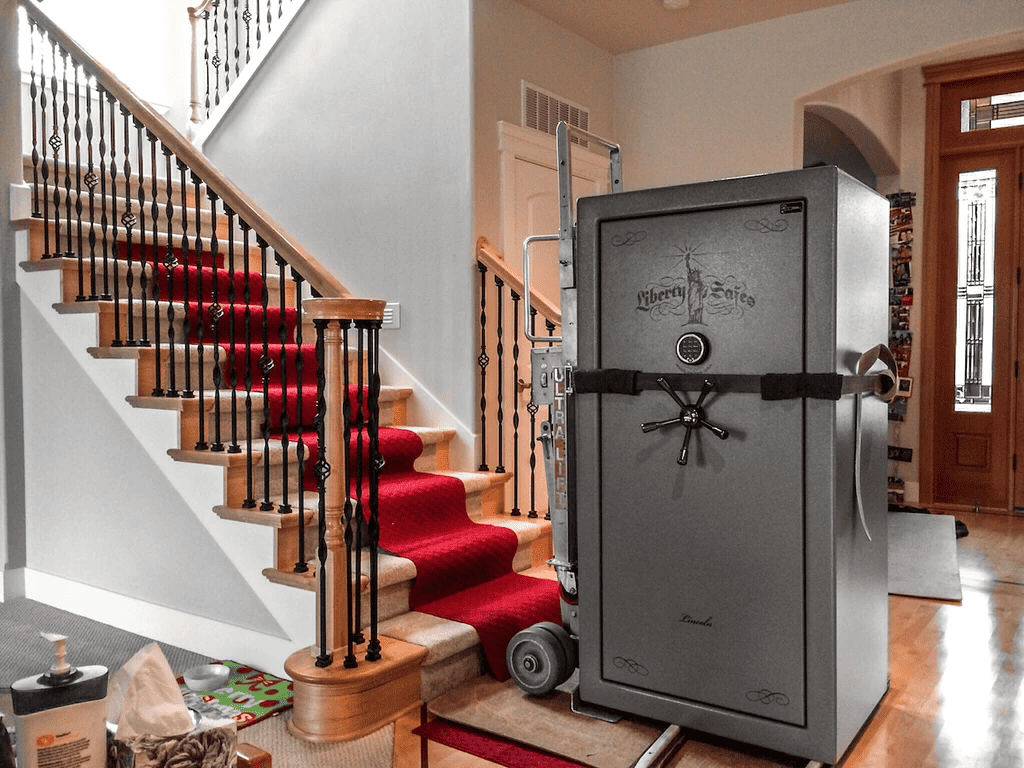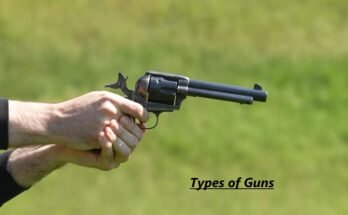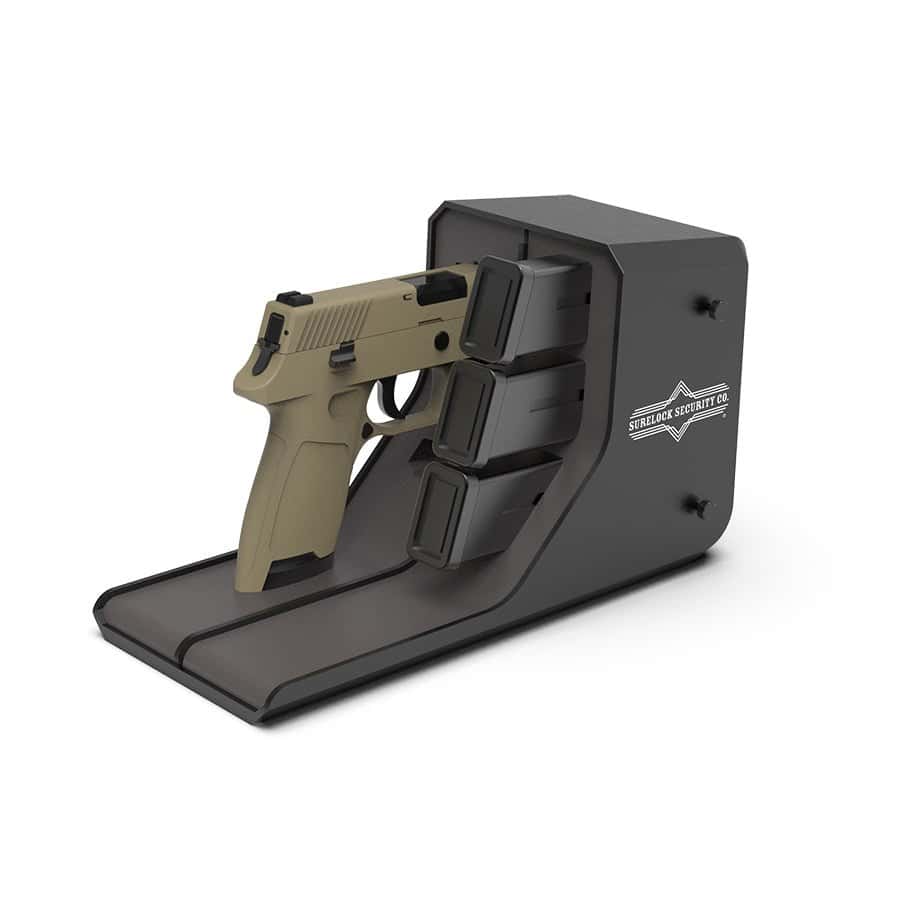Yes, a gun safe can go upstairs as long as the structure can support the weight. Make sure to assess floor load capacity before installation.
Gun safety is a critical concern for homeowners looking to secure firearms from unauthorized access and accidents, which frequently prompts the question of safe placement within the home. Strategically situating a gun safe upstairs can offer discretion and an additional layer of security, especially in cases where it’s less accessible to children or potential intruders.
Despite the potential challenge of maneuvering such a heavy item upstairs, assessing the integrity of the staircase and consulting with professionals can result in a successful setup. Adequate preparation ensures the protection of your home’s infrastructure and secures firearms in an accessible, yet safeguarded, location within your living space.
Assessing The Weight Limits For Upstairs Installation
Is your heavy gun safe causing you sleepless nights about where to install it? Consider putting it upstairs but unsure about the weight limits? Let’s break down the key factors needed to safely place your gun safe on an upper floor without risking structural damage.
Floor Reinforcement Considerations
Your home’s upper floor has weight limits. Average joists support 40 pounds per square foot. By calculating the safe’s size and weight, you can know if extra support is necessary.
- Identify joist direction and spacing
- Calculate safe’s weight per square foot
- Consider materials: wood, steel, or concrete
Consult a structural engineer to confirm if reinforcement is needed. Safety first!
Safe Weight Distribution
Even distribution of your safe’s weight is crucial. A large square footage reduces pressure on any single point. This can help prevent floor damage.
Some tips for even weight distribution:
- Place on a hard, flat surface
- User rubber or felt pads underneath
- Ensure safe is level to avoid tilting
Spread the weight over multiple joists. Avoid the edges of a room where the floor is weaker.

Credit: nwsafe.com
Selecting The Right Safe For Upstairs Use
Selecting the Right Safe for Upstairs Use involves making careful decisions. A gun safe not only protects valuable firearms but also must be safely positioned. Considering the construction of a home, upstairs floors may have weight limitations. This guide will help you choose the proper safe for upstairs installation.
Size And Weight Criteria
The size and weight of a gun safe are crucial for upstairs placement. Not all floors can handle heavy loads. To prevent structural damage, follow these guidelines:
- Assess Weight Limit: Check the load-bearing capacity of your upstairs floor.
- Compact Size: Opt for a smaller safe to reduce stress on floor joists.
- Spread the Load: Consider a safe with a footprint that distributes weight evenly.
| Safe Weight (lbs) | Recommended Floor Type |
|---|---|
| 300-500 | Standard residential floor |
| 500-1000 | Reinforced flooring |
Material And Build Quality
Select a safe built for strength without excessive weight. Key features include:
- Robust Materials: Seek safes made from durable steel.
- Smart Design: A well-designed safe maximizes security while minimizing weight.
- Quality Build: Ensure the build quality does not compromise on protection.
Look for certifications that guarantee material and construction excellence. Confirm that the safe aligns with upstairs capacity. Always prioritize a safe’s security along with its suitability for upstairs use.
Navigating The Challenges Of Moving A Safe Upstairs
Placing a gun safe upstairs ensures it stays out of sight. Yet, taking a heavy safe upstairs isn’t simple. It calls for strength, strategy, and safety. Weighty objects risk damage to stairs and pose personal injury risks. Reading on, you’ll discover how to move a safe upstairs effectively.
Professional Safe Movers
Securing professional help is wise. Professionals have the right tools and expertise. They use stair-climbing dollies and protect your home from damage. Here are benefits:
- Expert handling of your safe’s weight and size
- Injury risks drop with trained movers
- They understand safe maneuvering techniques
Professional movers bring peace of mind to a task as daunting as moving a safe upstairs.
Diy Moving Techniques
For the handy individuals, DIY moving can be an option. It requires thoughtful planning. Consider these steps:
- Measure your safe and pathways for a clear route
- Remove all obstacles from stairs and halls
- Use moving equipment like dollies and lifting straps
Enlisting friends can make your job easier. They can spot you and help lift. Always put safety first and take your time.
Installation Best Practices
Proper installation of a gun safe upstairs ensures maximum safety and ease of access. Reflect on weight and structural support before moving a safe upstairs. Follow these guidelines for a secure and solid setup.
Optimal Placement For Security And Accessibility
Select a spot that is discrete yet accessible. Avoid areas with high foot traffic. Consider proximity to your bedroom for quick access in emergencies. Confirm the floor can support the safe’s weight. Keep the safe out of sight from windows to deter theft.
- Choose a location away from guests.
- Ensure the spot is easy to reach during an emergency.
- Check floor strength for weight tolerance.
- Place out of direct line of sight from windows and doors.
Anchoring Techniques To Subfloors
Anchoring your safe adds an extra layer of security. Use the correct bolts and drill bits for your subfloor material. For concrete subfloors, choose concrete anchors. For wooden subfloors, heavy-duty lag bolts are ideal.
- Locate subfloor joists with a stud finder.
- Drill proper anchor holes, avoiding pipes and wires.
- Align safe over holes and insert bolts.
- Tighten securely, ensuring no movement.
| Material | Anchor Type | Tool Needed |
|---|---|---|
| Concrete | Concrete Anchors | Hammer Drill |
| Wood | Lag Bolts | Power Drill |
Legal And Insurance Implications
When thinking of placing a gun safe upstairs, it’s crucial to understand the legal and insurance implications. These factors ensure both safety and compliance with laws. Browsing through these considerations helps gun owners make well-informed decisions. Let’s dive into the details under two key areas: Complying with firearm storage laws and informing insurance providers.
Complying With Firearm Storage Laws
Adhering to local and federal laws for gun storage is vital for owners. These regulations differ by location but share a common goal – ensuring firearms are stored safely to prevent unauthorized access, particularly by children or intruders.
Owners need to:
- Check local regulations on firearm storage.
- Ensure the safe aligns with legal requirements.
- Consider the safe’s weight and structural support of the building.
- Lock firearms away when not in use.
Placing a safe upstairs may require additional measures. Owners must secure the safe to the floor to prevent risks of tipping or collapsing through the structure.
Informing Insurance Providers
Safeguarding guns often involves updating insurance policies. Insurance providers need to know where and how firearms are stored. This information helps providers assess coverage needs and risks.
Owners should:
- Notify providers before installing a safe upstairs.
- Review the policy to ensure it covers the full value of firearms.
- Understand policy specifics, including theft, damage, or loss.
Failure to inform can lead to denied claims. Owners must keep records up-to-date and store firearms according to the policy’s stipulations.

Credit: www.amazon.com
Maintaining Safety And Accessibility
When placing a gun safe upstairs, you ensure home protection layers. Strategic positioning allows for quick access during emergencies. Yet, it must remain secure to prevent accidents. This balance is key for gun owners. Proper safety measures and accessible plans maintain a protected environment. Let’s explore these critical aspects.
Routine Safe Checks
Regular inspections keep gun safes functioning well. Check for wear, tear, and potential issues. A well-maintained safe guards against unauthorized access. It keeps firearms secure and ready for use only when necessary.
- Lock Mechanism: Verify the lock works without sticking or delays.
- Door Joints: Inspect hinges for signs of strain or rust.
- Alarm System: Test alarms attached to the safe for prompt alerts.
Emergency Access Plans
In an emergency, speedy access is vital. Secure, yet accessible gun safes foster a safe response. Plan and practice home defense scenarios. Ensure every authorized adult knows the safe’s location and how to open it quickly.
| Step | Action | Goal |
|---|---|---|
| 1 | Memorize Code | Swift Safe Opening |
| 2 | Practice Runs | Reduce Response Time |
| 3 | Family Briefing | Ensure Awareness |
Include drills focused on reaching and unlocking the safe. Practicing reduces panic and promotes efficient firearm retrieval. This proactive approach upholds safety standards within the home.
Credit: www.libertysafe.com
Frequently Asked Questions On Can Gun Safe Go Upstairs
How Heavy Of A Safe Can You Put On A Second Floor?
The weight capacity for a safe on a second floor depends on the building’s structure. Generally, a residential floor can support a safe up to 1,000 pounds. Consult a structural engineer for specific assessments.
Can I Put A 400 Pound Safe Upstairs?
Yes, you can place a 400-pound safe upstairs, but ensure your floor can support its weight. Consult a structural engineer and follow manufacturer installation recommendations for safety.
Will My Floor Support A Gun Safe?
To determine if your floor can support a gun safe, consult a structural engineer or refer to building codes for weight-bearing capacity. Most standard floors handle average-sized safes; for heavy models, reinforce the area or select a ground-level location.
Where Is The Safest Place To Put A Safe In Your Home?
The safest place for a safe is on a concrete floor, away from plain view, like in a basement or a locked closet. Anchor it to the ground for added security. Avoid obvious spots like the master bedroom to deter thieves.
Conclusion
Concluding, transporting a gun safe upstairs requires careful planning. Ensure the structure can support the weight and seek professional help. Remember to prioritize safety and consult experts for a seamless move. Proper installation secures firearms and maintains home safety. Your peace of mind is worth the effort.



